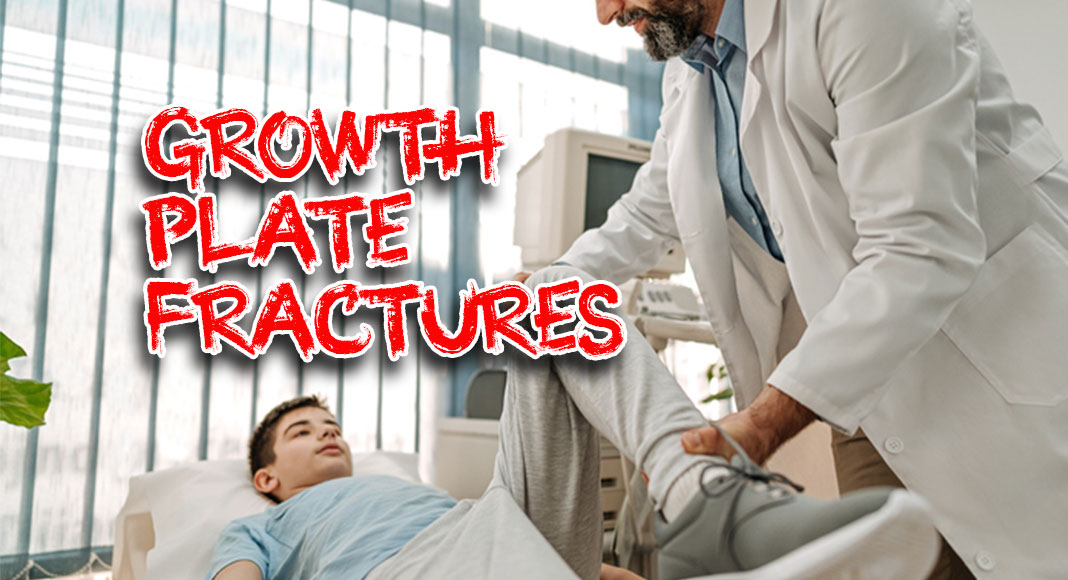
Mega Doctor News
by LifeBridge Health
Newswise – A parent bracing for the prognosis of their child’s broken bone might hear “growth plate fracture” and immediately think unfixable damage has been done.
Certainly, growth plate fractures should be diagnosed and treated promptly. Pediatric fractures in general heal differently than adult fractures and can affect a child’s future growth potential. Growth plate fractures pose additional risks—mainly the potential for a deformity that can develop months or perhaps years down the road—and can be hard to identify on a standard X-ray, making an examination by a pediatric orthopedist or other expert in children’s skeletal injuries more critical.
“In the long term, you can get limb length discrepancies or an angular deformity where part of the growth plate shuts down from the trauma and another part keeps growing. That’s the main thing you worry about after a growth plate fracture,” says Philip K. McClure, M.D., FAAOS, a board-certified orthopedic surgeon specializing in limb lengthening and reconstruction, and assistant director of the International Center for Limb Lengthening at the Rubin Institute for Advanced Orthopedics (RIAO), a LifeBridge Health center.
However, a growth plate fracture isn’t as bleak as its name might suggest. Here’s why outcomes are often favorable with prompt attention and treatment even if a deformity eventually does develop:
What is a growth plate?
As can be inferred from the name, growth plates control how bones grow, determining their length and shape. Made up of cartilage, they are located at the ends of long bones (the thighbone and the metacarpal bones in your hands, for example), near joints. Growth plates disappear when a child reaches maturity (or has fully grown), but they are the last portion of children’s bones to harden, which is why they’re so susceptible to injury during the growth process.
A growth plate can fracture the same way a bone can fracture. Growth plate fractures are commonly caused by falls. They can also occur during participation in sports such as football, soccer or gymnastics. Also, they can occur gradually due to repetitive stress on the bone, which can result from overtraining. Recreational activities like skateboarding, biking and trampolining also put children at increased risk of a growth plate fracture.
Technically, all growing children are at risk of growth plate fractures, but boys more so than girls because it takes boys longer to finish growing. Growth plate fractures typically occur in the lower legs, forearms, and fingers. The immediate symptoms—pain and swelling—will feel a lot like those of any other fracture, which is more reason for children to see an orthopedist or other skeletal growth specialist in the event of a fracture to determine if a growth plate has been damaged.
Is surgery necessary?
The risk of future problems resulting from growth plate fractures will depend on multiple factors, including the child’s age. Growth plate fractures tend to be less consequential if they occur near the end of growth. (Usually, growth plates in the arms and legs disappear at age 14 in girls and age 16 in boys.)
“A 16-year-old boy who suffers a growth plate fracture—once you get the fracture fixed and it heals, it’s unlikely to cause problems for him, whereas in a six-year-old boy, it can be a very different story because even if you get the fracture to heal and align nicely, the child still might require treatment down the line for a deformity,” McClure says.
That concern for what’s also known as a “growth arrest,” which can cause a bone to grow unevenly and become crooked even after a fracture heals, is why “some children should continue to have follow-up visits with a specialist until they’ve finished growing, into the late teenage years,” McClure says.
With proper treatment, most growth plate fractures heal without complications. And while all growth plate fractures need treatment, not all of them will require surgery. “Some sort of immobilization is almost always needed, but most growth plate fractures can be repositioned without surgery and then held in a cast while they heal,” McClure says.
Also, it is important to know that deformities can be corrected though a limb lengthening procedure or osteotomy (surgery that involves cutting and reshaping the bone).
“Some patients get the sense that if they develop a deformity, there’s nothing that can be done about it, but that’s not true. Even people who’ve had a deformity for 10 or 20 years can be corrected in most cases,” McClure says. “Deformities can be treated at almost any age, easily into a person’s 60s, though after longer periods of time arthritis and other complications can arise.”











